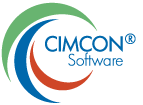What provides the Lowest Total Cost of Ownership (TCO) - Best of Breed Packaged Software vs. an Internally Developed Solution?
Anyone who has bought computer systems over the last 30 years has come up against the same dilemma – shall we go for a ‘best of breed’ packaged solution, or shall we build it internally, using the skills of the internal IT teams? It is the classic “Make or Buy” dilemma.
You talk about your requirements with IT. They look at the problem – it looks like a few database tables with a couple of front-end screens for data entry/update will do the job. Chuck in a couple of reports and hey - the job’s done. It won’t take more than a couple of months, tops. Surely that’s better than spending more money on what looks like an expensive solution from a vendor?
It does seem initially that going for a home-grown solution will bring benefits - the costs will be lower than getting an outside vendor involved, and you should get an exact fit as the solution will be designed specifically for you. So, where is the problem?
The reality, however, is quite different, and as the months go by, it becomes clear why it is better to buy that vendor solution you discounted on price. Let’s look at the reasons why a vendor solution is the best choice for most solutions, and especially in the arena of End User Computing.
Firstly, vendor solutions will have been around for a long time. This has several benefits that are not apparent at the outset – given their longevity and customer base means that the solution would have been enhanced immeasurably since its first release. It would have been tried and tested by many users, in many different situations, and would have been adapted to support best industry practices. This will avoid costly pitfalls and software changes that you have not yet anticipated, as you are implementing such software for the first time.
The influence of other companies on the solution cannot be understated – having many organizations giving their input to the solution will mean any initial short-comings are removed, user interfaces and processes are improved, the ability to support larger enterprises is enhanced and the software can therefore grow and adapt as its users require.
Then there is the ongoing development of the software – usually, a home-grown solution will become frozen in time – the system will be developed for a purpose which it will initially meet. But then over time, requirements will change, and there won’t be any time or budget to revisit the software to adapt to your changing needs or changes to the market and business processes. The same also applies to technological obsolescence – all software must constantly keep up with new developments and technologies. This is especially true in the area of end-user computing (EUCs), and spreadsheets - new versions of Excel, Office, Windows and SQL Server databases require that any software must keep pace with new versions as old versions are retired or no longer supported by the organization.
The final reason is support – you will have a project team created to develop the in-house solution. While the project team is there, you will, of course, receive great support (or you should do!). But after the project is completed and the system delivered, those SMEs will move on to a new project, and all the knowledge and experience gained will be lost. In any case, they will no longer be available to answer your calls, and the level of support the business receives will degrade to zero over time. With externally developed solutions, a business will continue to get support long into the future; it’s a paid service with SLAs, so you can rely on that support to be there as long as you want it to.
So although a home-grown system can look like a more cost-effective solution at the outset, experience has proven again and again that a vendor-developed solution will provide the most effective solution over time and the lowest Total Cost of Ownership (TCO). Further, if you choose the right vendor, they should listen to your needs carefully, and if their product does not already meet all of your needs, they should be willing to add any gaps to their future roadmap.



